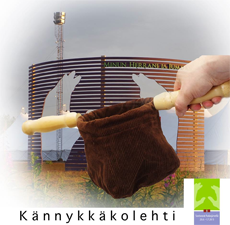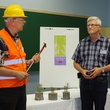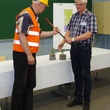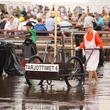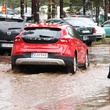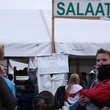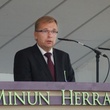Facebookissa
Ota Suviseurat seurantaan Facebookissa, niin saat ajankohtaisimmat tiedot seura-alueelta.
Summer Service Site
Pudasjärvi Airport
The service site—the Pudasjärviaviation center—is located on route 78, about five kilometers from the center of Pudasjärvi toward Ranua. In close proximity to the service site are a vocational school, a campground, Jyrkkäkoski Rapids, and Kontiotuote Oy, a log building factory. The area also has recreational and leisure-time services, including hiking and ski trails, ski jumps, and horse stables.
The airport was constructed during WWII. After the war it was left unused and gradually became overgrown with trees. In the 1950s Oulun Ilmailukerho (Oulu Aviation Club) acquired a permit from the Ministry of Defense to use the airport for club activities. The aviation club cleared and renovated the airfield to meet the requirements of amateur aviation and constructed a club building, a hangar, and lodging facilities in the area, as well as a sauna on the bank of the Kivarinjoki River.
The current airport was completed in the autumn of 1990. The runway is 2,000 meters long and 45 meters wide. The Lapland Air Command uses the airport for annual training and practice. The airport is used by civil aviation mainly for amateur and training activity. Amateur activity mainly involves sailplanes, for which local climate and airport conditions offer excellent possibilities. Training consists primarily of sailplane training provided by the aviation club. The airport is currently owned by the City of Pudasjärvi. Summer Services were held on the airport grounds the first time in 1998.
Pudasjärvi - Ranua
Pudasjärvi has a population of around 9,000. It is located in the northeast corner of Northern Ostrobothnia, midway up the Iijoki River at the border of Lapland. Ranua, Lapland’s southernmost municipality with a population of a little over 4,000, borders Pudasjärvi on the north side. Only a hundred years ago most of Ranua belonged to Pudasjärvi. Then the region’s inhabitants made a living mostly from primary production. Today the service industry comprises the main form of business.
The region’s nature is diversified. The southern and western parts of both Pudasjärvi and Ranua consist of low-lying bogs interspersed with wooded stretches of land. The region has one of Finland’s highest concentrations of bogs, including Litokaira, the largest aapa bog south of the Arctic Circle that has been preserved in its natural state.
In the northeast corner of Pudasjärvi is the Syöte area, which includes two of the highest peaks in the region—Iso-Syöte and Pikku-Syöte. Today Syöte is known for the ski centers located on these two peaks as well as Syöte National Park.
An important tourist destination in Ranua is Lake Simojärvi and the river route along the Simojoki River, which is in its natural state and belongs to the Natura 2000 conservation area network. The area around Lake Simojärvi also offers a variety of outdoor activities. A great destination for families, in particular, is Ranua Zoo.
![]()








